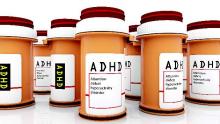Youths who take atomoxetine for attention-deficit/hyperactivity disorder or other mental health conditions do not appear any more likely to attempt or complete suicide than those treated with stimulants alone, a recent study found.
“Our real-world findings should be integrated in treatment decisions that weigh stimulant and atomoxetine effectiveness against their respective side effect profiles, especially considering the demonstrated risk for injury and potential self-harm associated with untreated ADHD itself,” Stephan Linden, Ph.D., of the University of Florida, Gainesville, and his associates reported online (Pediatrics 2016 Apr 26. doi: 10.1542/peds.2015-3199). “Even if general concerns about bias are considered, the observed incidence rates provide assurance regarding a limited potential for clinically significant risk differences.”
The researchers analyzed pediatric administrative health care claims from 26 states using data from the Centers for Medicare & Medicaid Services between 1999 and 2006. The 499,530 patients, aged 5-18 years, were divided into two cohorts based on whether they received atomoxetine as a first-line or second-line treatment for ADHD or a mental health condition commonly treated with atomoxetine or stimulants.
In the first-line cohort of 279,315 patients from 2003 to 2006, the researchers compared the 20% treated with atomoxetine to the 80% who received stimulants. The second-line cohort of 220,215 youths included 26% of patients who initially received stimulants and then switched to or added atomoxetine, each of whom was matched to three patients in the cohort who remained on stimulants alone.
Of the 140 suicide attempts and/or completions in the first-line treatment group, 50 occurred during current stimulant exposure and 47 during former stimulant exposure, compared with 18 during current atomoxetine use and 25 during former atomoxetine use. These numbers translated to rates of 26, 33, 38 and 53 per 100,000 person-years, respectively. No significant increased risk of suicidal events occurred among those receiving atomoxetine, both before and after adjusting for age, calendar year, gender, race/ethnicity, state of residence, reasons for Medicaid eligibility, comorbid diagnoses (mental and nonmental), and number of hospitalizations for any reason.
In the second-line cohort, the 90 suicidal events that occurred included 46 during current stimulant use, 17 during former stimulant use, 11 during current atomoxetine use, and 16 during former atomoxetine use. The unadjusted rates were 32, 22, 29, and 37 per 100,000 person-years, respectively. Again, the hazard ratios before and after adjustment for confounders were not significant (P = .74 and P = .43).
“Statistical power limited our ability to stratify analyses to high-risk groups or long-term users of atomoxetine,” the researchers noted as one limitation, but “the overall small suicidal event rates indicate a small absolute risk increase potential in typical clinical practice.”
The research was supported by the Agency for Healthcare Research and Quality, the National Institutes of Health, and the Mary Kay Owens Healthcare Innovation and the DuBow Family fellowships. The data came from the Centers for Medicaid & Medicare Services. One investigator has previously received research funding from Otsuka and Pfizer and has consulted for Pfizer. No other authors reported relevant financial disclosures.


